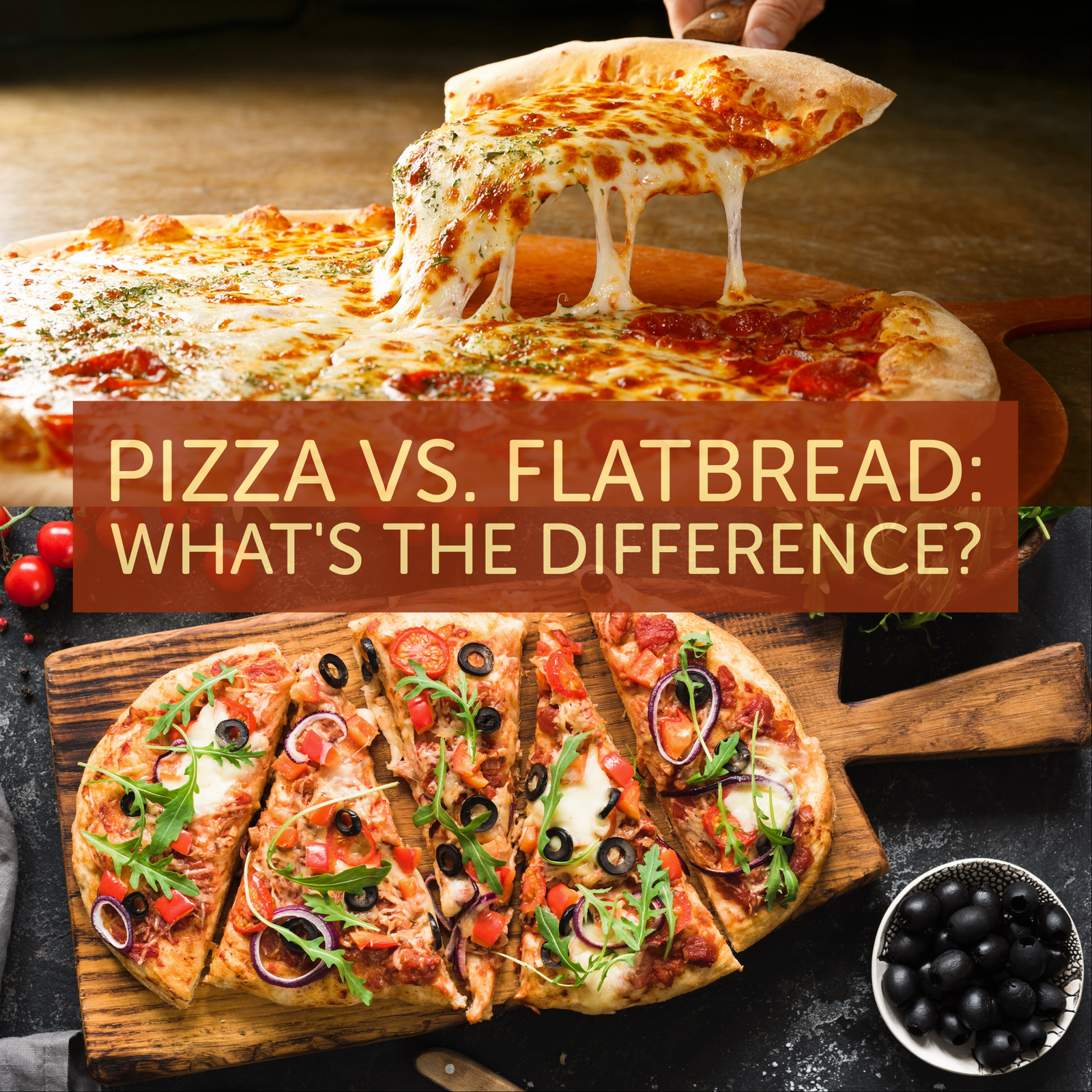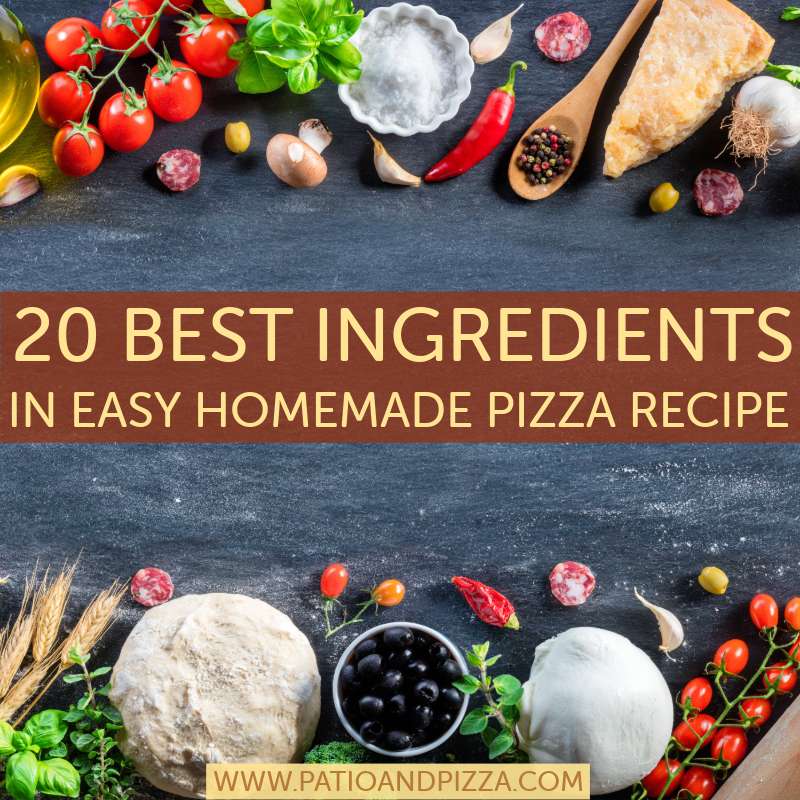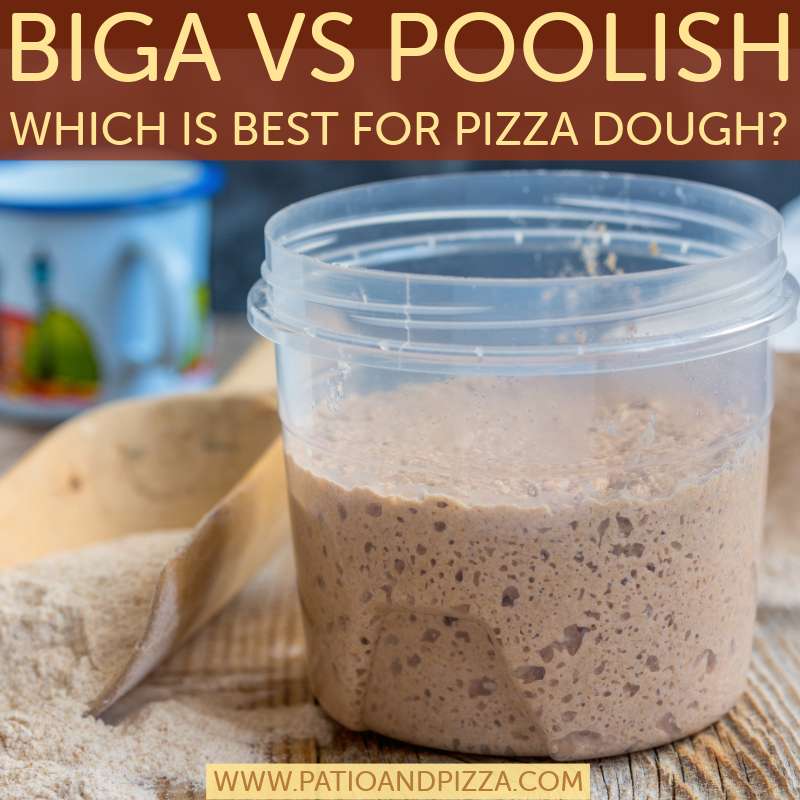Get ready for a culinary clash that's as delicious as it is legendary—Pizza vs. Flatbread! These two beloved dishes share the spotlight in kitchens worldwide, yet their subtle differences make each a unique delight for our taste buds.
In this sizzling showdown, we'll explore the top 5 distinctions that set pizza and flatbread apart. From doughy dramas to topping tales, saucy situations, cheese choices, and even a trip around the globe, it's time to unravel the mysteries behind these delectable creations.
So, grab a seat at the table and join us on this flavor-filled journey as we dive deep into the world of pizza and flatbread, discovering what makes each a culinary masterpiece in its own right!
Flatbread vs Pizza
-
Dough Drama:
-
Pizza: It's all about that fluffy, chewy crust! Pizza dough usually contains yeast, giving it time to rise and develop its signature texture. This results in a thicker, bread-like base that's perfect for loading up with toppings.
-
Flatbread: Think thin and crispy! Traditional flatbread dough tends to be a simpler affair, often made without a leavening agent (ie, yeast). The lack of rising time in this unleavened dough results in a thinner, crisper crust that's more akin to a giant cracker than a pillowy pizza base.
-
-
Topping Tales:
-
Pizza: The king of toppings! From classic tomato sauce and mozzarella to exotic combinations like pineapple and ham (yes, we went there), pizza is a canvas for creativity. You'll find everything from meats to veggies, creating a delightful flavor symphony.
-
Flatbread: Less is more! Flatbreads often showcase a select few high-quality toppings. Fresh herbs, cheeses, and artisanal ingredients shine on the simple canvas of a flatbread. It's about savoring the individual flavors rather than creating overload with flatbread toppings.
-
-
Saucy Situations:
-
Pizza: The saucier, the better! Pizza sauces are often tomato-based and play a crucial role in adding moisture and depth to the dish. Whether it's a classic marinara or a white sauce, the right base can elevate your pizza experience.
-
Flatbread: A hint of sauce will do! Flatbread recipes may feature a light drizzle of olive oil, a smear of pesto, or a touch of yogurt-based sauce. It's about complementing the toppings without overwhelming the delicate balance of flavors.
-
-
Cheese Choices:
-
Pizza: Melty, gooey, and abundant! Pizza is a cheese lover's paradise. Mozzarella, cheddar, parmesan—take your pick. The cheese on pizza is often a key player in creating that irresistible, stretchy goodness we all know and love.
-
Flatbread: Less cheese, more finesse! Flatbreads embrace a restrained approach to cheese. A sprinkle of feta, a few crumbles of goat cheese, or a light dusting of Parmesan is all it takes to enhance the overall experience without drowning out other flavors.
-
-
Cultural Origins:
-
Pizza: The Italian Stallion! Hailing from Naples, Italy, pizza has conquered the world with its versatile and comforting appeal. Whether you're a fan of the classic Margherita or the adventurous BBQ chicken pizza, there's a slice for everyone.
-
Flatbread: A Global Affair! Flatbreads are a culinary canvas found in various cultures—naan in India, pita in the Middle East, and lavash in Armenia. Each region puts its unique spin on flatbreads, making them a global favorite with diverse flavor profiles.
-

Store-bought vs Homemade
Regardless of whether you want a pizza or flatbread, the age-old debate between store-bought and homemade often arises. While convenience may tip the scales in favor of pre-packaged options lining the shelves in grocery stores, the differences between store-bought and their homemade counterparts are palpable.
Most store-bought doughs, though convenient, often contain a list of preservatives and additives to prolong their shelf life. On the flip side, crafting homemade pizza dough at home allows you to control the quality of ingredients, ensuring a fresher and more wholesome product.
The texture and flavor of homemade flatbreads and pizzas are unmatched, offering a delightful chewiness or crispiness depending on your preference. Plus, the aroma that fills your kitchen as the dough transforms into golden rounds is an experience in itself. So, while the convenience of store-bought flatbread is undeniable, the satisfaction, nutritional value, and flavor of crafting your own are worth the extra effort—providing a truly authentic and personalized culinary experience.
5 Popular Flatbreads
Much of the time, the type of bread you are eating is considered various types of flatbread. These are often made with simple ingredients although their flavors suggest years of experience. Here are five types of crust that are flatbread options.
-
Naan:
- Originating from South Asia, naan is a leavened flatbread made with all-purpose flour, yogurt, and yeast. It's typically cooked in a tandoor, resulting in a soft, slightly chewy texture. Naan is a versatile flatbread that pairs well with various Indian dishes or can be enjoyed on its own.
-
Pita:
- Hailing from the Middle East, pita is a round, pocketed flatbread made with wheat flour. The high heat of an oven causes the dough to puff up, creating a hollow center. Pita bread is perfect for stuffing with falafel, kebabs, or fresh vegetables, making it a staple in Mediterranean cuisine.
-
Lavash:
- A thin and unleavened flatbread, lavash has its roots in Armenian and Middle Eastern cuisines. Made with flour, water, and salt, lavash is rolled thin and baked until crisp. It's often served with dips, cheese, or used as a wrap for meats and veggies.
-
Tortilla:
- Originating in Mexico, the tortilla is a thin, unleavened flatbread made from corn or wheat flour. Corn tortillas have a distinct flavor and are commonly used for tacos, while larger flour tortillas are popular for burritos and wraps. They're a versatile choice for a wide range of Mexican and Tex-Mex dishes.
-
Matzo:
- A traditional Jewish flatbread, matzo is a type of unleavened bread made with only flour and water. It is a central element of the Passover celebration, symbolizing the haste with which the Israelites left Egypt. Matzo has a crisp texture and is often enjoyed with various toppings or used in recipes as a substitute for leavened bread.
These five types of flatbreads showcase the diversity of this beloved food category, each bringing its unique characteristics and cultural significance to the global table. Whether you're indulging in the chewiness of naan or savoring the crunch of lavash, flatbreads are a culinary adventure waiting to be explored.

5 Popular Types of Pizzas
If you're a lover of traditional pizza dough, here are five pizzas with the most popular favorite pizza toppings. Whether you're a traditionalist or an adventurous foodie, there's a pizza waiting to steal a slice of your heart.
-
Margherita:
- The epitome of simplicity and elegance, the Margherita pizza is a classic Neapolitan creation. Topped with fresh mozzarella, tomato sauce, basil, and a drizzle of olive oil, this pizza celebrates the flavors of Italy in a harmonious combination.
-
Pepperoni:
- A perennial favorite, the pepperoni pizza is a crowd-pleaser with its generous layer of spicy, cured pepperoni slices. This American classic often features gooey mozzarella and a zesty tomato sauce, delivering a satisfying blend of savory and tangy notes.
-
Hawaiian:
- Mixing sweet and savory, the Hawaiian pizza brings a taste of the tropics to your palate. Topped with ham, pineapple, and melted mozzarella, this controversial yet beloved pizza variety offers a delightful contrast of flavors.
-
BBQ Chicken:
- A twist on the traditional, the BBQ chicken pizza swaps tomato sauce for barbecue sauce, creating a smoky and tangy flavor profile. Topped with grilled chicken, red onions, cilantro, and a blend of cheeses, this pizza is a savory-sweet sensation.
-
Mushroom and Truffle Oil:
- Catering to the more sophisticated palate, the mushroom and truffle oil pizza is a gourmet delight. Earthy mushrooms, truffle-infused oil, creamy cheeses, and perhaps a sprinkle of fresh herbs create a rich and indulgent flavor experience.
These five popular types of pizzas exemplify the versatility of this beloved dish. Whether you're a fan of the timeless Margherita or an adventurous soul exploring the unique flavors of a BBQ chicken pizza, the world of pizza offers a diverse array of options to suit every taste and craving. So, whether you're a traditionalist or a culinary explorer, there's a pizza variety waiting to captivate your senses.
Simple Homemade Flatbread Crust Recipe
Ingredients:
- 2 cups all-purpose flour
- 1 teaspoon baking powder
- 1/2 teaspoon salt
- 1 cup plain Greek yogurt
- 2 tablespoons olive oil
- Additional flour for dusting
Instructions:
-
Prepare the Dough:
- In a mixing bowl, whisk together the all-purpose flour, baking powder, and salt.
-
Combine Wet Ingredients:
- Add the Greek yogurt and olive oil to the dry ingredients. Mix well until a shaggy dough forms.
-
Knead the Dough:
- Transfer the dough to a lightly floured surface and knead it for about 5 minutes, or until it becomes smooth and elastic. If the dough is too sticky, add a bit more flour.
-
Rest the Dough:
- Place the dough back into the mixing bowl, cover it with a clean kitchen towel, and let it rest for 30 minutes. This gives the gluten in the dough time to relax.
-
Divide and Roll:
- After the resting period, divide the dough into golf ball-sized portions. On a floured surface, roll each ball into a thin round, about 1/8 inch thick.
-
Cook the Flatbreads:
- Heat a non-stick skillet or griddle over medium-high heat. Cook each flatbread for 1-2 minutes per side, or until golden brown spots appear. You can brush the tops with a bit of olive oil for added flavor.
-
Serve and Enjoy:
- Once cooked, stack the flatbreads on a plate and cover them with a kitchen towel to keep them warm. Serve with your favorite toppings, dips, or enjoy them plain!
This easy flatbread recipe is not only quick to make but also incredibly versatile. Use it as a base for Mediterranean-inspired toppings, wrap it around your favorite fillings, or tear and dip into your preferred sauces. The possibilities are as endless as your culinary imagination!
FAQs About Flatbread and Pizza
Is Flatbread Pizza Healthier Than Regular Pizza?
The healthiness of flatbread pizza versus a regular type of pizza is not inherent in the type of crust but rather in the overall composition and ingredient choices. Making conscious decisions about toppings, crust, and portion sizes can contribute to a healthier pizza option with fewer calories, regardless of whether it's on a traditional or flatbread crust.
The healthiness of flatbread pizza versus regular pizza depends on various factors, including the specific ingredients used, portion size, and individual dietary preferences. Here are some considerations to keep in mind:
-
Crust Thickness:
- Flatbread pizza often has a thinner crust compared to traditional pizza. A thinner crust can result in a lower calorie and carbohydrate content, making it a potential choice for those looking to reduce their calorie intake.
-
Ingredients:
- The healthiness of the pizza depends heavily on the ingredients used. Both flatbread and regular pizza can be made with a variety of toppings, ranging from vegetables and lean proteins to higher-calorie options like processed meats and extra cheese. Choosing fresh, whole ingredients and opting for lean proteins and veggies can enhance the nutritional profile of either type.
-
Portion Size:
- Portion control is crucial for overall health. If you choose a smaller portion size and load your pizza with nutritious toppings, it can be a balanced and satisfying meal.
-
Nutrient Content:
- Flatbreads made with whole grains or alternative flours can contribute more fiber and nutrients compared to traditional pizza crusts. Consider whole wheat or multigrain flatbreads for added nutritional value.
-
Sauce and Cheese:
- Both flatbread and regular pizza can be heavy on sauces and cheese, which can contribute to calorie and fat content. Opting for lighter amounts of cheese or choosing lower-fat cheese options and using tomato-based sauces can be a healthier choice.
-
Personal Preferences:
- Dietary preferences and health goals vary among individuals. Some may find flatbread pizza aligns better with their nutritional goals, while others may prefer the heartier, more traditional crust.
Is Flat Crust Pizza Healthier?
The healthiness of flat crust pizza depends on various factors, primarily the choice of ingredients and portion control. Generally, flat crust pizza, often featuring a thinner and sometimes whole grain crust, can be perceived as a potentially healthier option compared to traditional thick-crust pizza. The thin crust may contribute to a lower calorie and carbohydrate content, while whole grain variations can provide added fiber and nutrients.
However, the overall nutritional profile is heavily influenced by toppings, sauce, and cheese choices. Opting for fresh, nutrient-dense toppings, using lighter amounts of cheese, and practicing portion control are essential for making flat crust pizza a healthier choice.
Ultimately, it's about striking a balance between enjoyment and nutritional considerations based on individual dietary preferences and health goals when eating the world's most perfect food.
What is the Difference Between Flatbread and Thin Crust Pizza?
The distinction between flatbread and thin-crust pizza lies in both the composition of the dough and the culinary traditions associated with each.
Flatbread: Flatbread is a category of unleavened or lightly leavened bread that is, as the name suggests, flat. The dough for flatbread can vary widely, incorporating ingredients such as flour, water, salt, and sometimes yeast or baking powder. Flatbreads come in various shapes and sizes and are staples in many cuisines worldwide, like naan in Indian cuisine, pita in Middle Eastern cuisine, or lavash in Armenian cuisine. Humble flatbread is typically thinner than traditional pizza crusts and have a varied texture, ranging from soft and pliable to crisp and cracker-like.
Thin-Crust Pizza: Thin-crust pizza, on the other hand, is a specific style of pizza characterized by a thin and crispy crust. The dough for thin-crust pizza is usually made with flour, water, yeast, salt, and sometimes a small amount of oil. Unlike flatbread, thin-crust pizza dough often undergoes a rising process, albeit a shorter one compared to thicker crusts.
Thin-crust pizza is popular in various regional pizza styles, such as New York or Neapolitan, each with its unique characteristics. The emphasis on a thin, crisp crust allows the toppings to shine without overwhelming the palate with doughiness.
In summary, while both flatbread and thin-crust pizza share the trait of having a thinner crust compared to traditional pizza, flatbreads encompass a broader category of unleavened or lightly leavened bread from diverse culinary traditions, whereas thin-crust pizza refers specifically to a style of pizza with a thin and crispy crust, often associated with certain regional pizza styles.
As we wrap up this culinary face-off between Pizza and Flatbread, we hope your taste buds are tingling with anticipation. Whether you're a die-hard pizza fanatic or a flatbread enthusiast, there's no denying the magic that happens when dough, toppings, and creativity come together.
Now that you've savored the top 5 differences, it's time to delve into the intriguing history behind one of the world's most beloved dishes. Curious about who invented pizza?
Unlock the secrets and embark on a journey through time by reading our blog post, 'Who Invented Pizza' Trust us; it's a slice of history you won't want to miss.




